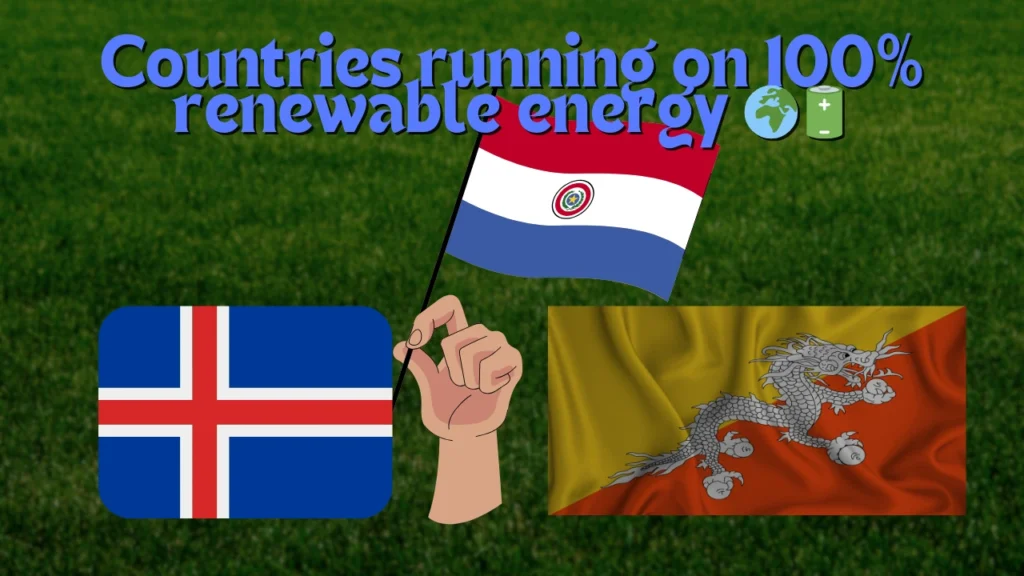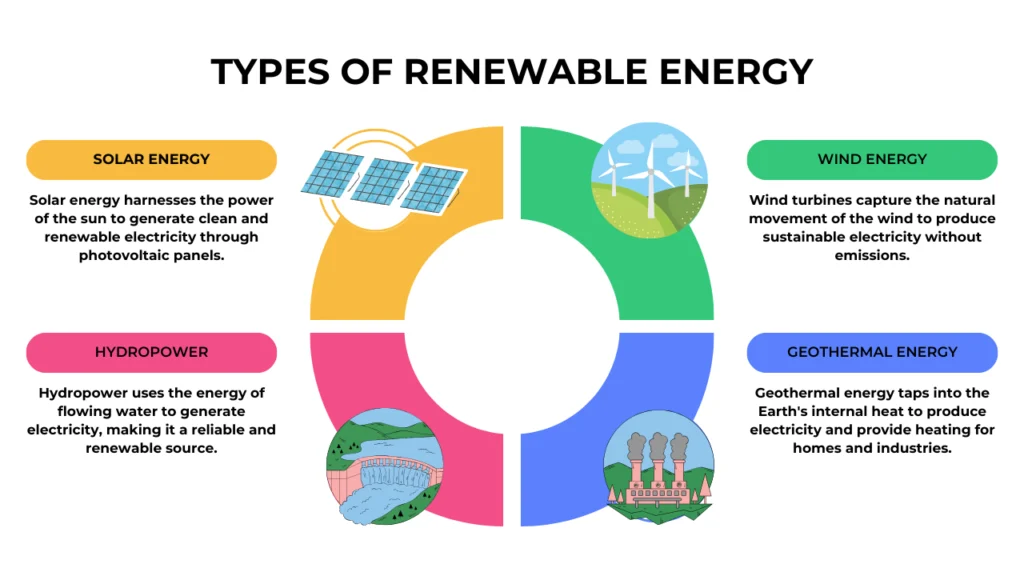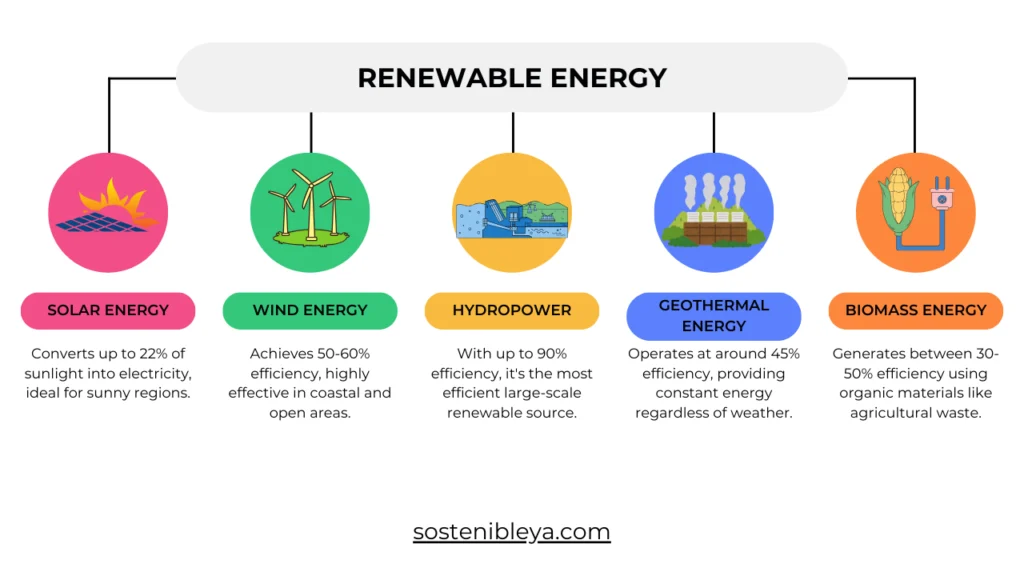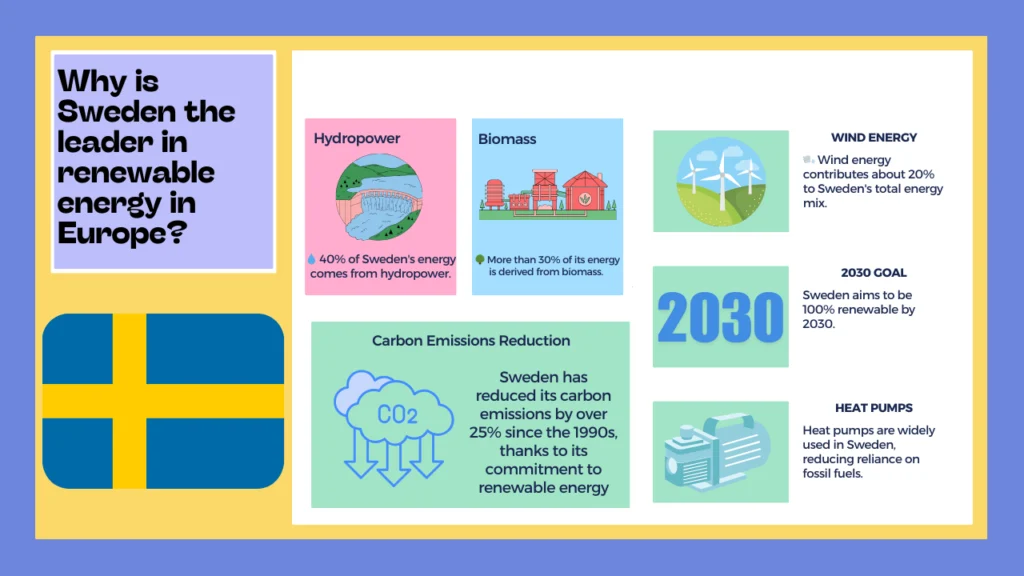
As the world shifts towards more sustainable energy practices, several countries are setting a high standard by generating 100% of their electricity from renewable sources. This remarkable achievement shows the potential for nations to power their economies without relying on fossil fuels. But which countries have reached this milestone, and how are they doing it?
Seven Countries Leading with 100% Renewable Energy
According to the latest data from the International Renewable Energy Agency (IRENA) and the International Energy Agency (IEA), seven countries now generate over 99.7% of their electricity from renewable sources like hydropower, geothermal, solar, and wind energy. These countries include:
- Iceland: Known for its vast geothermal resources, Iceland generates around 70% of its electricity from geothermal energy, with the remaining coming from hydropower and wind.
- Albania: Hydropower dominates Albania’s renewable energy landscape, contributing nearly all its electricity.
- Bhutan: With fast-flowing rivers from the Himalayas, Bhutan generates about 90% of its electricity from hydropower.
- Ethiopia: Ethiopia’s electricity is powered largely by hydropower, making up around 90%, with plans to expand wind and geothermal energy.
- Nepal: Similar to Bhutan, Nepal leverages its mountainous terrain to produce approximately 70% of its energy from hydropower.
- Paraguay: Paraguay is a global leader in hydropower, thanks to the Itaipu Dam, which generates 98% of the country’s electricity.
- Democratic Republic of Congo (DRC): Hydropower also powers more than 90% of DRC’s electricity, tapping into the vast potential of the Congo River.
These countries showcase that it is possible to achieve near-complete renewable energy generation with the right resources and policies in place.
What Does It Mean to Run on 100% Renewable Energy?
Reaching 100% renewable energy means that a country generates all its electricity from clean, sustainable sources like wind, water, and solar. These energy sources are constantly replenished, unlike fossil fuels, which deplete over time and release harmful emissions.
Hydropower is the main contributor in many of these nations, especially in countries with abundant water resources. Geothermal energy plays a crucial role in places like Iceland, where volcanic activity provides a sustainable source of heat. Other countries, like Paraguay and Nepal, depend primarily on hydropower, while wind and solar energy are rapidly growing in importance globally.
Which Country Is Close to 100% Renewable Energy?
Though many countries are not yet fully powered by renewable sources, some are coming close. Norway, for example, generates 98.38% of its electricity from renewable sources, primarily through hydropower and wind. Countries like Germany and Portugal have also demonstrated that, during favorable weather conditions, they can temporarily run on 100% renewable energy, indicating their strong potential to transition fully.
The Role of Solar and Wind in the Renewable Energy Mix
While hydropower has been a dominant force in countries like Ethiopia and Bhutan, solar and wind energy are expected to take on a larger role in the future. The global capacity for wind energy saw a record increase in 2023, with 116 gigawatts of new installations. Solar energy, too, is seeing rapid growth, especially as costs decrease and technology improves.
Experts predict that solar power will eventually become the primary source of renewable energy globally. Its accessibility and rapid advancements make it a strong contender for dominating the energy landscape in the coming decades.
Global Trends Toward 100% Renewable Energy
Beyond the seven countries already operating on near-total renewable energy, many other nations are making significant strides. Recent studies show that over 40 countries now generate at least 50% of their electricity from renewable sources. Scotland, for example, produced 113% of its electricity demand from renewables in 2022, showcasing how nations can exceed their own energy requirements through clean energy technologies.
The Future of 100% Renewable Energy
The progress of countries like Albania, Iceland, and Paraguay demonstrates that the goal of 100% renewable energy is not only possible but is happening now. To see which country leads in renewable energy in Europe, explore our article on Which European Country Uses the Most Renewable Energy?. As renewable technologies continue to advance and as costs decline, more nations are expected to follow suit. To understand more about the different types of renewable energy, check out our article on What Are the 7 Types of Renewable Energy?. However, challenges remain, particularly in developing effective energy storage solutions and grid modernization to handle intermittent sources like wind and solar.
Governments, private sectors, and international organizations must collaborate to ensure that the transition continues, helping other countries join the ranks of 100% renewable energy nations.
FAQ
What countries use 100% renewable energy?
Countries like Iceland, Bhutan, Ethiopia, and Paraguay are among the seven nations that generate nearly all their electricity from renewable energy sources like hydropower, wind, and geothermal energy.
Which country is closest to 100% renewable energy?
Norway generates around 98.38% of its electricity from renewable sources, primarily hydropower, making it one of the leading countries in renewable energy generation.
Can solar and wind power alone achieve 100% renewable energy?
While hydropower dominates in most 100% renewable energy countries, solar and wind are expected to play a larger role in the future as technology improves and costs continue to decline.
How many countries generate more than 50% of their electricity from renewable energy?
Over 40 countries currently generate at least 50% of their electricity from renewable energy sources, with 11 of them located in Europe.
What challenges do countries face in achieving 100% renewable energy?
Key challenges include developing efficient energy storage solutions, modernizing power grids to accommodate renewable sources, and maintaining a stable energy supply during low production periods.



